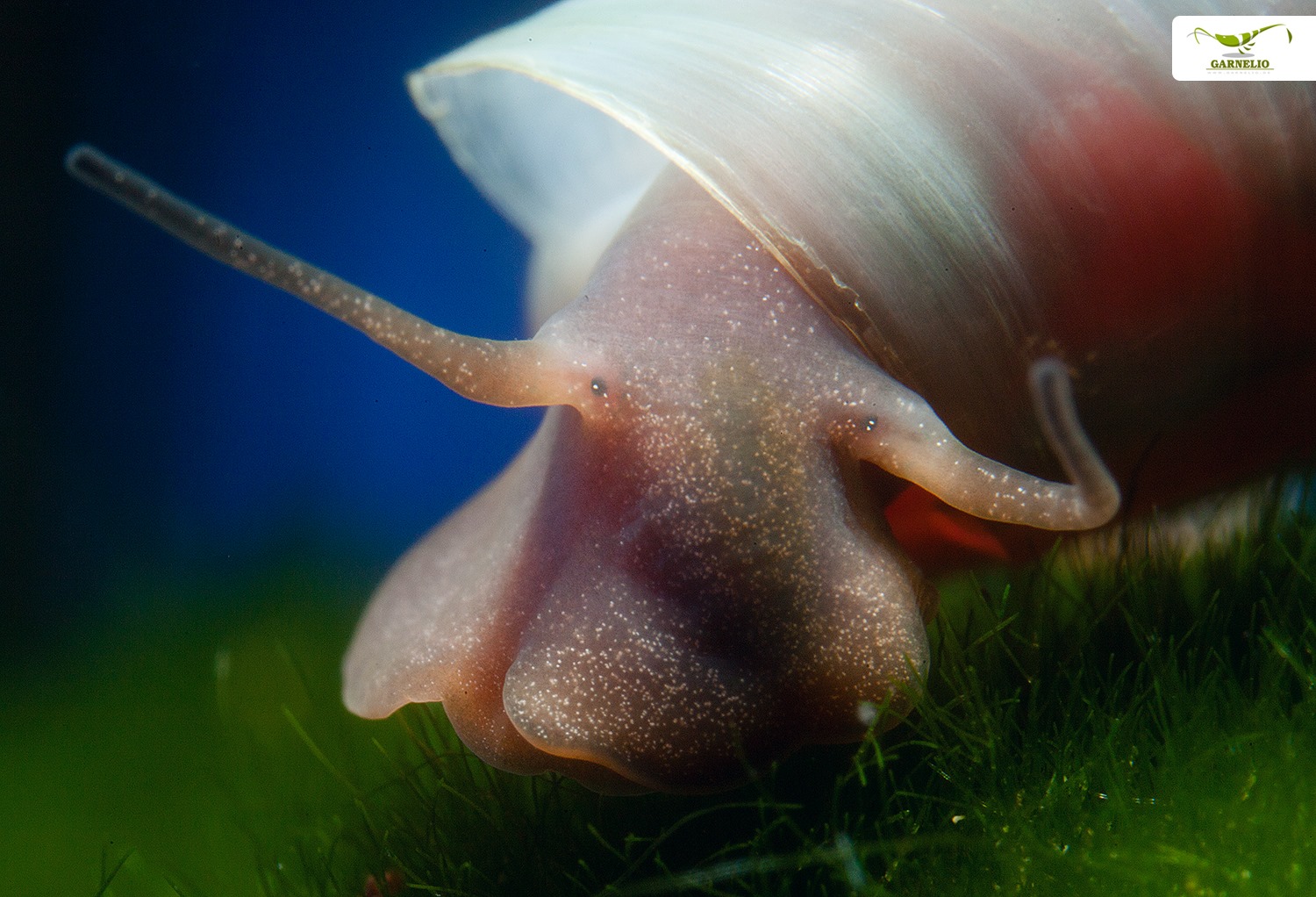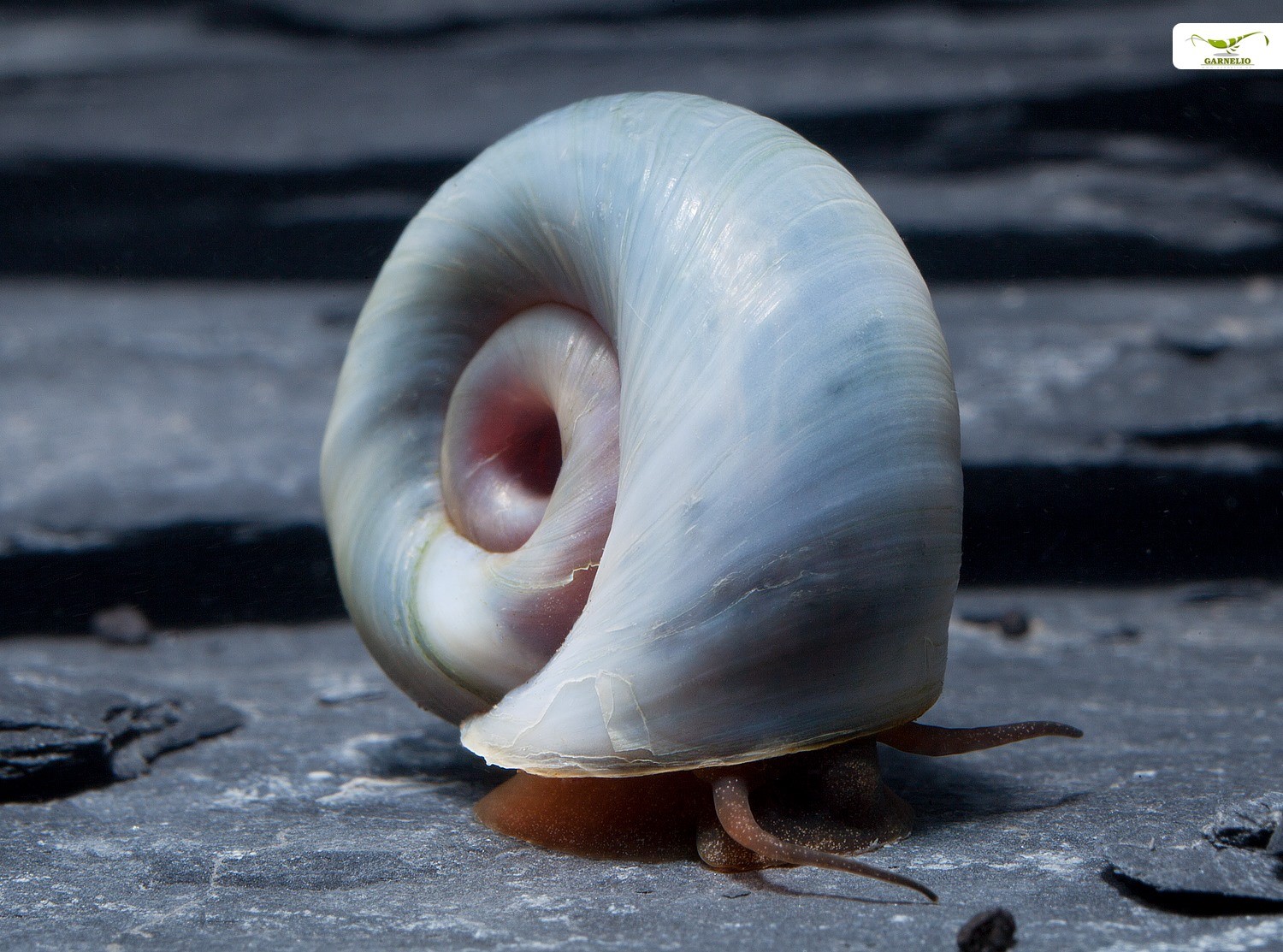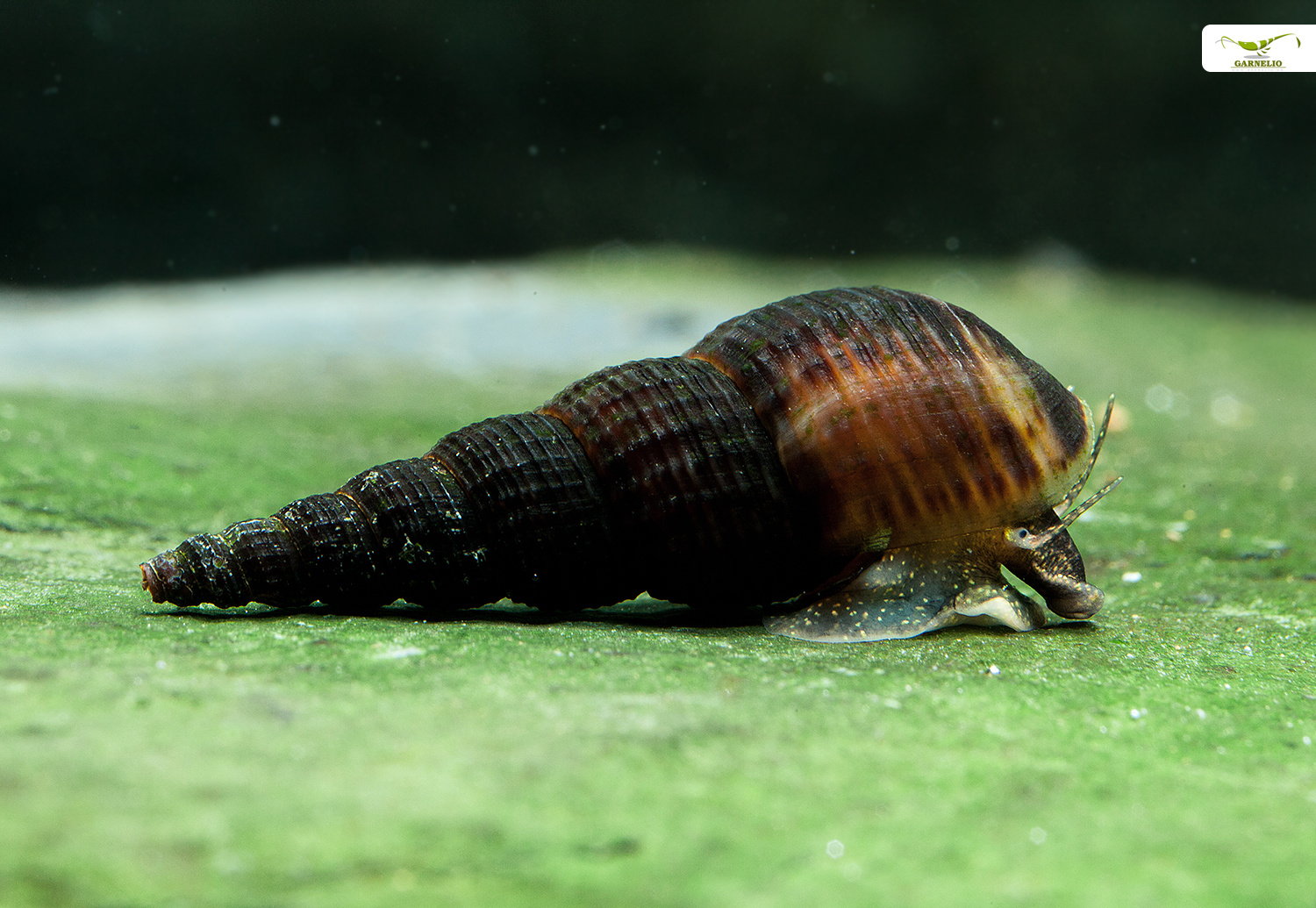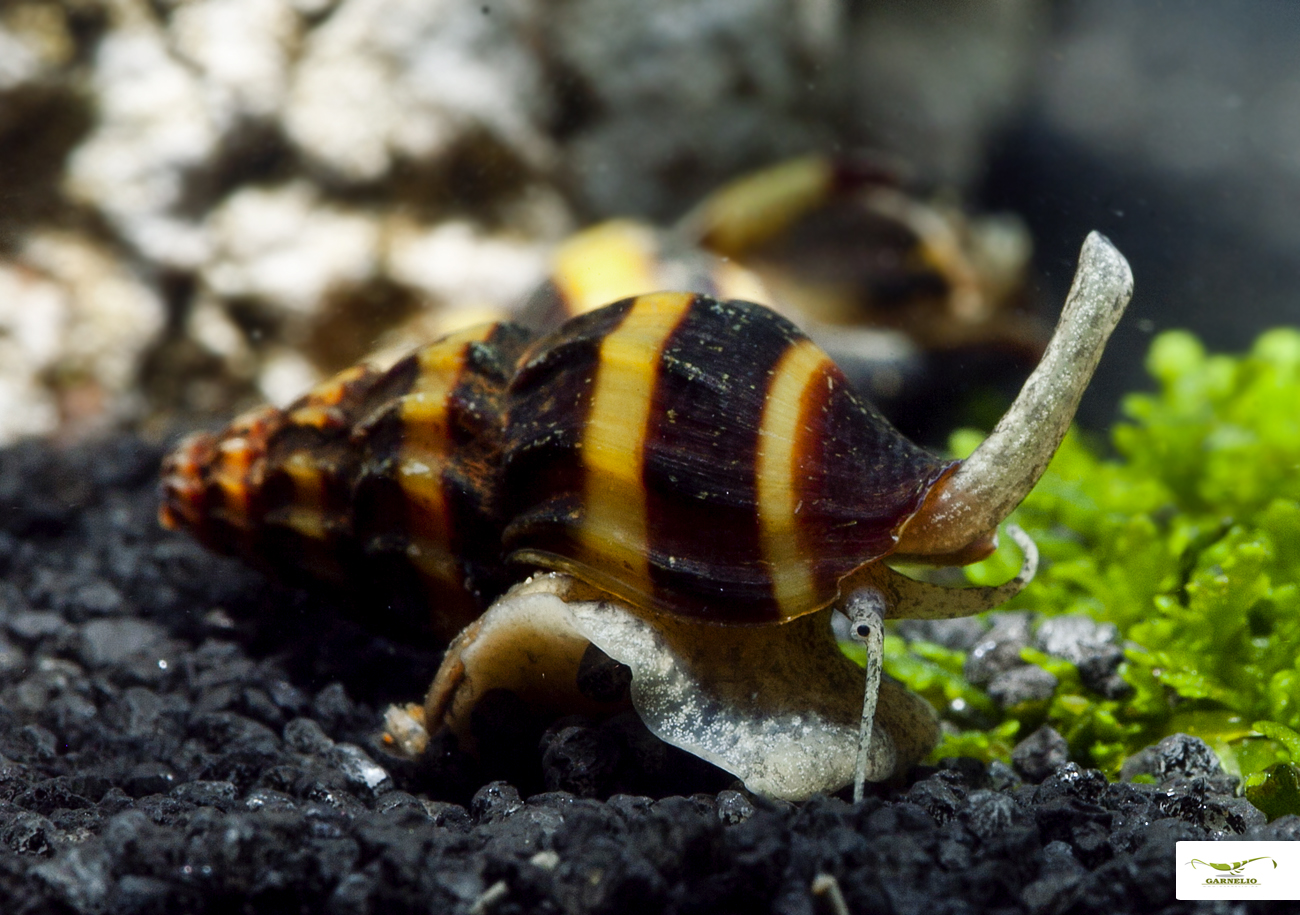Snail plague in the aquarium
What to do in case of snail infestations?
Snails that suddenly appear in the tank often come into the aquarium as stowaways with plants. Most aquarists who have discovered snails in their aquarium want to get rid of them - almost everyone has heard horror stories about true snail population explosions. And these stories have a kernel of truth. When snails find enough food, they multiply like rabbits, and they can displace less prolific snail species.
Under no circumstances should chemical slug killers be used. These are biocides that have a devastating effect not only on snails, but also on shrimp and some species of fish. Especially bottom-dwelling fish are very sensitive to this treatment.
Before we get into what can be done about these snails, however, let's look at what these supposed pests can do for us.
Many fish or shrimp keepers tend to feed too much. Many fish are true show talents and masterfully give the poor starving fin carrier. We all know what the optimal amount of food is, but if we're honest - who can resist those looks? Uneaten food collects at the bottom, slips between the gravel or piles up in dark corners, for example under the root, where it rots unnoticed. This promotes algae growth and, in extreme cases, can lead to bacterial blooms and severe oxygen depletion.
However, if you have enough snails in the tank, they will simply eat this food debris.
Physa sp., the spring bubble snail , grows to a maximum size of 1 cm and multiplies very strongly if there is a lot of food. Since it mainly eats algae, biofilms and dead, rotting plant parts, this can also happen in a freshly set up tank where feeding is not yet taking place. Once the aquarium biology settles, there will be less algae available and the number of snails will decrease. Bubble snails will happily take fish or shrimp food (and continue to reproduce heavily in overfed aquariums), and they won't say no to aquarium animals that have died unnoticed - which is good, because that way the water values won't be affected by them. Physa sp. will not go after healthy plants, their radula (rasping tongue) is not hard enough to handle them.

Post horn snails (Planorbella duryi) can reach a size of 2 cm. They are very fond of algae, detritus and food scraps. They are even better scavengers than bubble snails. Post horn snails do not go to live animals.
The brown wild form with dark brown shell and dark grayish brown body (link) is common. Young posthorn snails have spots that resemble a leopard pattern. They give way to uniform coloration as the snails become sexually mature.

Color variations of the ramshorn snail
The red-gold color form with orange-red body and golden shell is well known. The blue post horn sn ail has a whitish translucent shell and a dark body. The body color shimmers through the shell making it appear blue. The pink variety also has a whitish house and a red body, making it look pink. There are many more colors, and new ones are popping up all the time: There are apricot, greenish or black color forms and many more. These color variations of the ramshorn snail cross the line between uninvited guest and "decorative" snail.

Trumpetsnails (Melanoides tuberculatus) eat detritus. They also dig up the substrate, working in the resulting mulm to make it available for plants, and they prevent rotting in the soil. Unlike post horn snails and bubble snails, trumpet snails do not have lungs, but are gill breathers. This makes them more sensitive to nitrite. As soon as the nitrite level rises above 0.1 mg/l, turmdeckel snails often start to migrate en masse to the surface, as the water there has a slightly higher oxygen content. They react to nitrite much earlier than fish, so if you notice such a mass migration to the surface, you should first measure the nitrite level and, if necessary, perform a major water change.
They come in dark brown, black and caramel; some have a darker pattern. They do not go after healthy plants.
Tarebia granifera, the nubby turret snail, affectionately known as "Nöppi", has a sculpted house and remains smaller and stockier than M. tuberculatus, as does the spiny turret snail (Mieniplotia scabra, formerly Thiara winteri). There are practically no differences in behavior.
These three species are viviparous and reproduce by virgin reproduction (parthenogenesis). This means that the females can reproduce independently - a single snail is enough to gradually populate an entire aquarium.

The only snail more often introduced unintentionally that actually eats plants is the pointed mud snail (Lymnaea stagnalis).
Nevertheless, there are some shrimp keepers who even introduce them on purpose: Sharp mud snails not only eat plants (or better, holes in plants), but also hydras. Freshwater polyps can become very annoying in shrimp aquariums, so you can generously overlook a few nibbled leaves and let the pointed mud snail satisfy its appetite for hydras.
So unintentionally introduced snails can actually be beneficial. But we were not immune to the begging looks of the fish, fed too much, and now there are not just a few useful snails in the aquarium, but hundreds. What to do?
First of all, you should reduce the amount of food or - as far as possible - switch to other types of food. Many fish like to take live food, which these snails will not eat. And even if the aquarium inhabitants may think differently - fish and shrimp do not need to be fed every day if there are no juveniles in the tank. If you feed only every other day, the amount of food left for the snails is reduced and they reproduce more slowly. This method is the best in the long run, but it only affects the number of snails after weeks - you need patience and must remain consistent.

If you want to reduce the number of snails faster, you can use a snail trap or simply put a piece of cucumber in the tank and use it to collect the snails.
Snails should never be flushed down the toilet or exposed! Because many species can survive in our climate, they pose a serious threat to native fauna.
Owners of puffer fish, turtles or predatory snails are always happy to receive a donation of food. Food snails can also be offered via forums and groups, against postage reimbursement you can actually always get rid of them.
The best and least inconvenient way to control the snail population, however, is always an adjusted amount of food.

Ringelhandgarnelen fressen Blasenschnecken
Meine Ringelhandgarnelen fressen sehr gern Blasenschnecken, sie rotten sie zwar nicht aus, halten sie aber im Zaum. Habe noch nicht bemerkt, dass sie sich an lebenden Fischen - auch Jungfische - vergreifen.
Dem Kann ich nur zustimmen
Auch ich habe in meinem Becken Rothandgarnelen. Diese schönen Tiere "vergreifen" sich gerne an meinen Turmdeckelschnecken, die großen werden aber in ruhe gelassen. Auch alles was krank oder tot ist wird mit einer Geschwindigkeit gefressen die mir immer sorge um meine Lebenden und Gesunden Fische macht. Solange diese schönen Garnelen nicht größer wie 5-6 cm werden habe ich aber noch nie Probleme gehabt. Danach müssen diese aber Raus! sonst werden die Schwänze der Fische Kürzer. Ich biete sie dann im I-net an und werde sie gegen Porto Erstattung immer los.
Tradierte Märchen?
Melanoides tuberculatum frisst leider auch sehr gerne Laich und da sie nachtaktiv sind haben sie bei mir auf Dauer nicht nur die Posthornschnecken ausgerottet, sondern auch bei meinen Zwergbuntbarschen (Pelvicachromis taeniatus "Nigeria Rot") jeden Zuchtversuch verhindert - außerdem fressen Posthorn- und Turmdeckelschnecken die Pflanzen oft an, sobald man das Zufüttern reduziert, weil sie sich zu sehr vermehren.
Die einzigen Schnecken, die bei mir wieder einziehen dürfen, sind Blasenschnecken - als Krebsfutter.